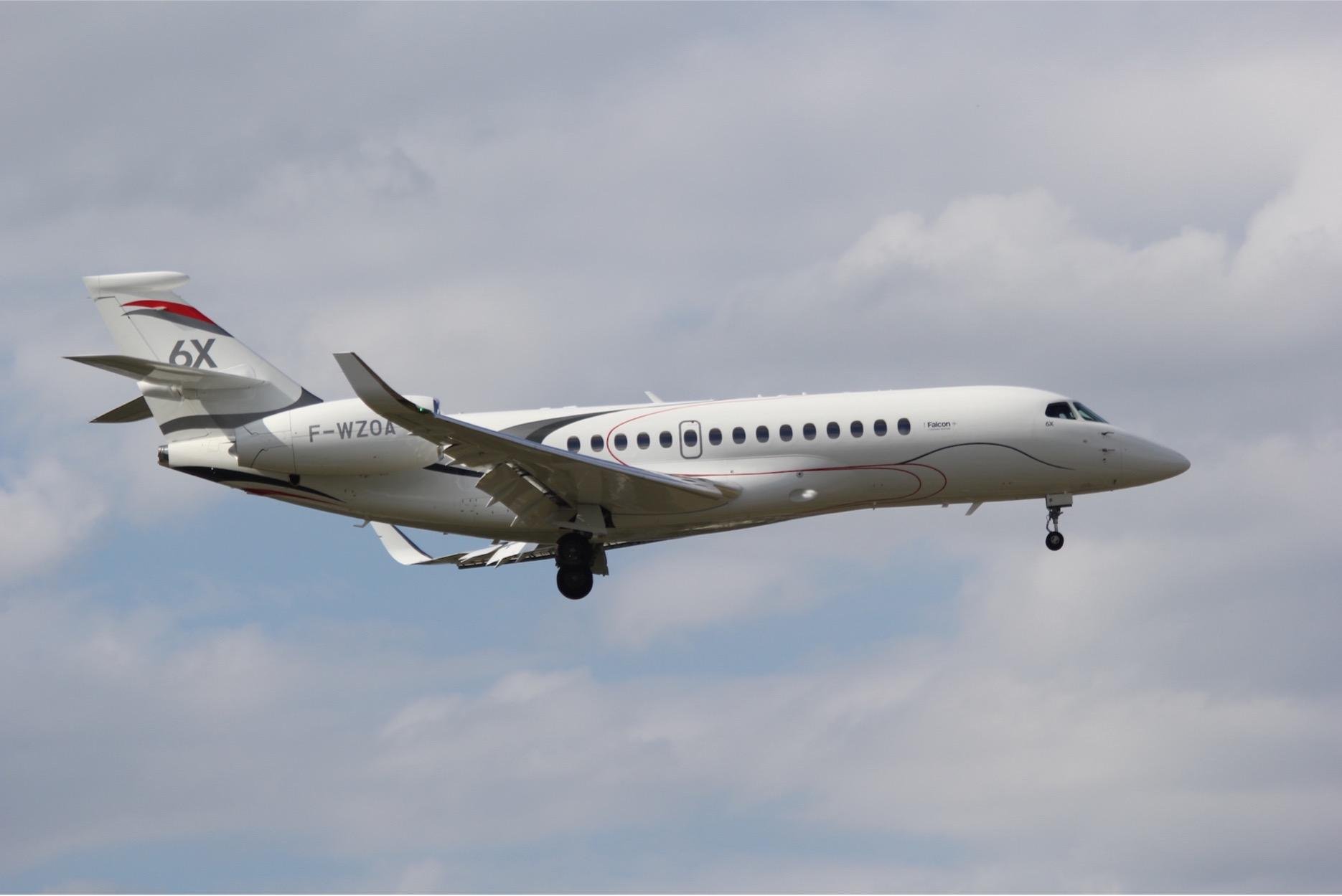Dassault Falcon 6X

Announced on Feb. 28, 2018, the Falcon 6X is a twin-engine business jet produced by French manufacturer Dassault Aviation. When the type was launched in 2018, Dassault noted that “the 6X is largely based on the Falcon 5X aerodynamics and system features which were validated during the 5X preliminary flight-test program.” The 6X was rolled out on Dec. 8, 2020, ahead of the type’s first flight on March 10, 2021, a flight that lasted about 2 hr. 30 min. and was performed by Falcon 6X Serial No. 01, registered as F-WSIX. The type was subsequently certified by the European Union Aviation Safety Agency (EASA) on Aug. 22, 2023, with the first delivery expected in the fourth quarter of 2023.
The Falcon 6X can accommodate up to 19 passenger seats in a cabin that has a height of 6 ft. 6 in., width of 8 ft. 6 in., length of 40 ft. 4 in. and volume of 1,843 ft.3 Despite the type’s 19-passenger maximum capacity, Dassault promotes the cabin as having the ability to accommodate a maximum of 12 to 16 passengers across three “lounge areas,” with the airplane also having 155 ft.3 of baggage volume. The company further states that the cabin can be configured in a number of different layouts and that the potential configuration options include a “privacy suite.”
Pilots operate the Falcon 6X using Dassault’s fourth-generation Enhanced Avionics System (EASy) IV flight deck, which is based on Honeywell’s Primus Epic integrated avionics system. Specific features of that avionics system include the FalconEye combined vision system (CVS) and the FalconSphere II electronic flight bag (EFB), with the former system—which is standard—being the first head-up display (HUD) that can combine “into a single view” terrain imaging that is “synthetic [and] database-driven” with “actual thermal and low-light camera images.” Furthermore, the 6X’s flight-control system—the Digital Flight Control System (DFCS)—is described as “harmoniz[ing] control inputs around the aircraft’s three axes, augmenting pitch and roll dampening, as well as yaw stability.” The DFCS controls “all flight control surfaces,” and the incorporation of the nosewheel steering into the DFCS makes control on the ground “smoother” and allows for greater precision in runway tracking.
Mission and Performance
According to the FAA type certificate data sheet (TCDS) for the type, the operational limitations of the Falcon 6X include a maximum operating altitude of 51,000 ft. and a maximum operating limit Mach (MMO) of 0.90 Mach. When carrying eight passengers and National Business Aviation Association (NBAA) instrument flight rules (IFR) reserves, the airplane’s range is 5,500 nm. Based on the maximum takeoff weight (MTOW), sea-level altitude and International Standard Atmosphere (ISA), the takeoff distance is 5,480 ft. The airframe’s 2,480-ft. unfactored landing distance assumes ISA, sea-level altitude and a landing weight that is typical, while an approach speed—reference landing speed (VREF)—of 109-kt. indicated airspeed (KIAS) is also possible when operating at such a landing weight.
Variants
Powering the 6X are two Pratt & Whitney Canada PW812D turbofan engines that are noted by the airframe manufacturer as improving the airplane’s emissions, fuel burn and noise by “double digits” in comparison to the “current generation,” in addition to providing operators with better operating costs and having the ability to utilize sustainable aviation fuel (SAF). The FAA TCDS also states that the PW812D’s static engine limits—at sea-level altitude and in standard conditions—include a takeoff limit of 13,850 lb. and a maximum continuous limit of 12,989 lb. The Falcon 6X’s wing is a “new-generation wing” that is “optimized for both high- and low-speed performance,” while the presence of a rudder that is “large [and] powerful” is a benefit during takeoffs and landings in windy conditions. Another feature of this Falcon type are its flaperons—a control surface that functions as both ailerons and flaps—with those surfaces being particularly beneficial during approaches conducted at “a steep approach angle.”

